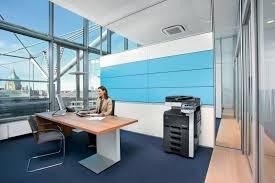Are you a limited cost trader?
Your business is a long-term user of the flat rate scheme and it saves you tax compared to normal VAT accounting. But have you correctly checked to ensure you are not a limited cost trader in some periods, with its punishing rate of 16.5%?

How the scheme works
The advantage of the flat rate scheme (FRS) is that you do not need to keep input tax records; your VAT payments each quarter are based on your VAT-inclusive income multiplied by the relevant flat rate percentage for your business. For example, the rate for accountants and computer consultants is 14.5%; hairdressers 13%; hotels 10.5%.
If your business does not have a specific category, you must use one of the two sweep-up categories with a rate of 12%: Business services not listed elsewhere; Any other activity not listed elsewhere.
You can still claim input tax with the FRS if you purchase fixed assets which cost at least £2,000 including VAT, e.g. a van.
Limited cost trader category
HMRC recognised that many businesses made profits by using the scheme if, e.g. they used the 12% sweep-up rate and had very little input to sacrifice. A new category was therefore introduced on 1 April 2017 - known as the limited cost trader (LCT) category - with a draconian rate of 16.5%.
At the end of each quarter - before you complete your return - you must check if you are an LCT by analysing the goods you have purchased in that period. You will be an LCT if your total purchases have not exceeded £250 including VAT or if they are less than 2% of your total VAT-inclusive turnover.
Example. John is a computer consultant and his VAT-inclusive sales for the quarter ended 30 April 2023 are £35,000. He purchased goods for his business totalling £500 including VAT - stationery, print cartridges, computer parts.
John is an LCT because although his purchases have exceeded £250 including VAT, they are less than 2% of £35,000. His VAT payment for the period will be £35,000 x 16.5% = £5,775.
The main problem is that your business might be an LCT in some periods but not others. You must do the calculations test each quarter.
You might be able to plan your buying of goods throughout the year to ensure you are never an LCT, or you only have a problem in, say, one or two periods each year.
Extra complications with LCT
The calculations above are not the end of the story. The legislation excludes many purchases of business goods from the figures. For example, petrol or diesel purchased for your vehicles is excluded from the goods figure unless you trade as a transport business. You must also exclude food and drink purchased for your staff, e.g. subsistence expenses.
There is a full list of excluded goods in HMRC’s VAT Notice 733, para 4.6. You should review this list so that you only include qualifying goods in your calculations.
If you qualify as an LCT in most or all periods, it will be best to leave the FRS and adopt normal VAT accounting. You can leave at any time, including part-way through a VAT period.
Related Topics
-
MONTHLY FOCUS: SECONDARY INCOMES
In 2023 it was revealed that HMRC would enjoy new data-sharing information from online selling platforms from 1 January 2024, including eBay, Etsy, etc. This led to media speculation that innocent people selling second-hand items would soon be hearing from a tax inspector. In this monthly focus, we look at the tax consequences of starting a small trade, or taking a second job.
-
New online service for voluntary contributions goes live
If you have gaps in your NI history, you can pay voluntary contributions to increase your entitlement to certain benefits, e.g. the state pension. You can now do this online. How do you access the new service?
-
Investing in woodlands - what are your options?
Investing in woodlands comes with several tax breaks. To make the most of these should you invest personally or through a company?